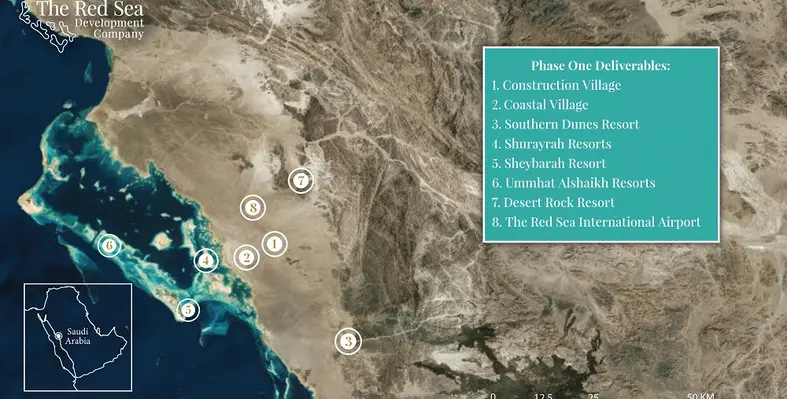The Red Sea Development Company (TRSDC) has completed the first stage of the LEED for Cities (Leadership in Energy and Environmental Design) platinum certification in the ?Plan & Design? criteria for The Red Sea Project
Upon completion in 2030, The Red Sea Project will comprise 50 hotels, offering up to 8,000 hotel rooms and around 1,300 residential properties across 22 islands and six inland sites. The destination will also include a luxury marina, entertainment and leisure facilities.
The award recognises TRSDC?s execution of practical and measurable strategies and solutions aimed at improving the sustainability and standard of living for those involved in the project.
?As part of our ambition to become standard-bearers in luxury ecotourism, we are proud to have passed this first stage of LEED accreditation. The award is recognition of our efforts to go beyond the current expectations associated with sustainable tourism, and to become one of the first global destinations to demonstrate a regenerative approach to tourism,? commented John Pagano, CEO of TRSDC.
The U.S. Green Building Council (USGBC) benchmarks current performance and establishes targeted metrics that enable continuous improvement and demonstrate a commitment to sustainability, human health and economic prosperity. As well as the destination-wide final certification set for award in Q2 2021, TRSDC is working with the USGBC to achieve certification on a number of hero buildings on site, including 15 hotels, an international airport and staff accommodation buildings.
Mahesh Ramanujam, president and CEO of USGBC, said, ?The work of cities and communities such as The Red Sea Project is a driving force in ensuring a more sustainable future for all. Cities and communities that achieve LEED certi?cation are lowering carbon emissions, creating a healthier environment and striving to improve the quality of life for their residents. The Red Sea Development Company is setting the standard for what it means to be a high performer and their e?orts and achievements should be an example for all.?
TRSDC?s commitment to regenerative tourism was recognised during the assessment process, specifically the master plan which was informed by a comprehensive Marine Spatial Planning (MSP) exercise. This initiative helped identify priority conservation areas and ensured 75% of the islands within The Red Sea Project area were left untouched, with nine islands designated as special conservation zones.
The TRSDC is also committed to delivering a 30% net conservation benefit by 2040. As part of this, it is creating the world?s largest battery storage facility to enable the entire site to be powered by renewable energy 24 hours a day, including the island sites.





